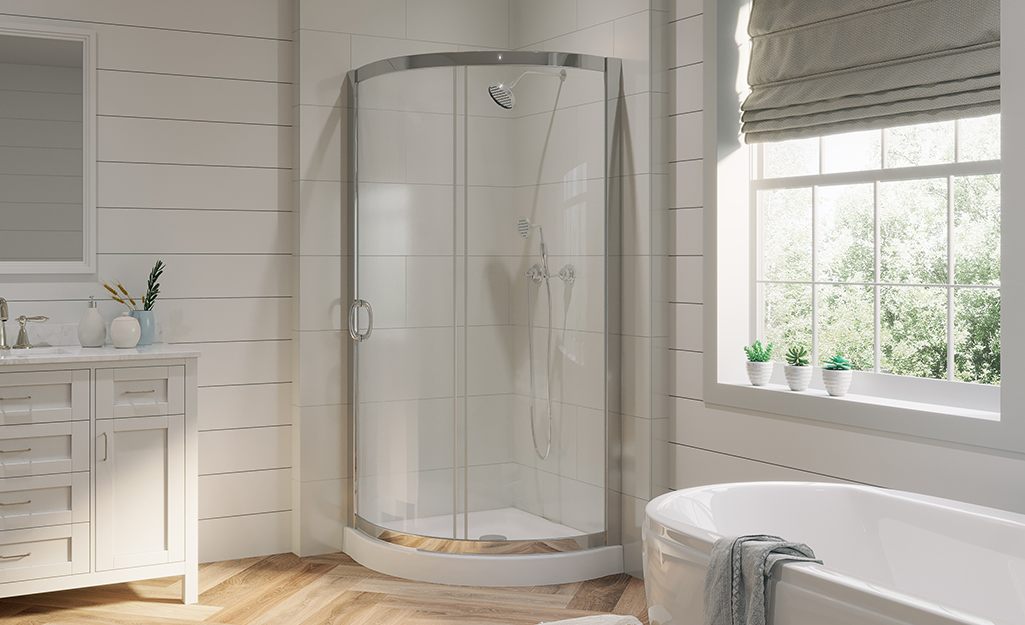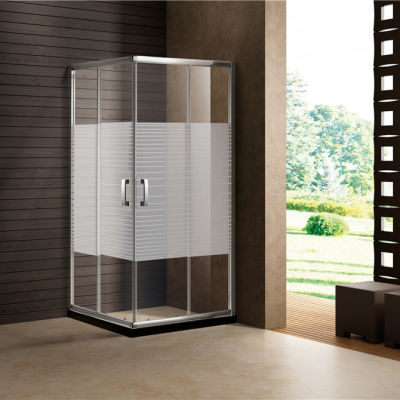Have you been searching for additional info on How to Install a Freestand?

An effective shower installment calls for careful planning and a lot of work. Most of the times, you will certainly need to do 3 kinds of jobs: framing walls, installing the plumbing, and also finishing walls.
Preparation
Firstly, you need to choose the sort of shower that you want to install. It is very important to determine whether the picked shower can dealing with specific systems and also can manage a secure level of water with the central heating boiler. A lot of shower systems nowadays are designed to be versatile to various water stress (such as stored warm water as well as chilly mains).
It is likewise essential to take into account the water pressure as well as the planning of the piping and drainage for the shower
Different Kinds Of Shower Units
- Push-on Mixer: The hose and spray parts of the push-on mixer shower system can be linked to the bathroom tap according to your need, and the water temperature level can be changed via the taps. Push-on mixers are cheap and also exceptionally basic to mount. Nevertheless, although the pipe connection is straightforward, it is easily dislodged. Additionally, it is bothersome to adjust the temperature level.
- Bath/Shower Mixer: The hose pipe as well as spray of this sort of shower are integrated with a bath mixer tap, and also the temperature level can be readjusted with the bathroom faucets. It is an extremely low-cost choice as well as no added plumbing is included. However, the bath/shower mixers also suffer from troublesome temperature control options.
- Manual Mixer: The tube and spray of a manual mixer shower system belong of the wall surface unit and the hot and cold water supplies are connected to a solitary shutoff The temperature and also pressure of the water are managed through either one or a selection of handles (in much more expensive showers). Although temperature control is a lot easier in hands-on mixer types, they are extra pricey than the formerly pointed out mixers. They also need additional plumbing of hot and cold water pipelines.
- Thermostatic Mixer: The hose and spray of this shower kind are a part of the wall system and the hot and cold water products are attached to a solitary shutoff here too. It is complete with a built-in stabiliser to self-adjust the water temperature level and also to avoid it from becoming too hot. Among the biggest advantages of a thermostatic mixer shower type consists of hassle-free temperature control. However, it is the most expensive of the different mixer choices.
- Power Shower: A power shower is a single device consisting of an effective electrical pump that is capable of changing both the water stress and also temperature. This type of shower can be fitted if there is water system from a cold water tank as well as a warm water cyndrical tube. A power shower makes the change of both pressure and also temperature very easy. On the other hand, it disagrees for water warmed straight by the shower or where the water is supplied by a mix central heating boiler under keys pressure.
- Electric Shower: An electric shower is plumbed into a mains cold water supply and it heats up the water electrically. It is essential to note that for this shower type to be installed, the keys pressure needs to be a minimum of 0.7 kg/sq centimeters (10lb/sq in). The unit permits the temperature and pressure to be changed via a knob. Versions with temperature level stabilisers are better as they stay unaffected by various other taps elsewhere in use within the household. A significant disadvantage of electric showers is that the control knob only allows for the option of high temperatures at much less pressure, or reduced temperature levels at a better stress. This is problematic in the winter season when the spray is frequently weak as well as the mains water is cooler. However, this trouble is tackled in some designs which are readily available with a winter/summer setup.
Approach
Depending on the sort of shower you wish to mount, the shower head have to either be fitted in order to avoid its contact with the water in the bath below or the base tray, or it should have a check valve.
Before beginning, it is advisable to note the settings of the shower head and also control, and also to prepare the pipe-work involved. Additionally, the water drainage system to eliminate the waste water will need to be planned. Both settings of the cable route as well as the shower switch will certainly additionally require to be taken into consideration if an immediate or electric shower system is being installed.
Use the instruction guide given with the shower device to fit the shower control.Before suitable the pipes that will provide the water to the shower system, it is necessary to cut off the water. In order to shield the pipelines, they must be offered a water-proof covering as well as additionally fitted with separating shutoffs. The pipelines can then be buried right into the wall and smudged over to neaten the general look.
Fit the base tray, shower head, as well as installations.
Connect the main shower control to the pipelines that will certainly be supplying the water (This may call for a women screw string adapter).
Reconnect the supply of water and also examination the pipes for any leaks, as some may need tightening.
If you are mounting an electrical shower, keep in mind to turn off the electrical energy supply prior to making any electrical connections. As soon as these connections have been made (there should be assistance within the user's manual), the power supply can be switched over back on.
Adjusting Water Stress to Fit Your Shower
The cold water reservoir can be raised to a better elevation (often just 150mm (6inches)) by installation a solid wood support beneath it - potentially composed of struts and also blockboards. If you pick this alternative, the main and also circulation pipelines will additionally need to be elevated to fulfill the new elevation of the tank.
Conversely, a booster pump (a single pump or a dual/twin pump) can be fitted. Whichever kind is picked, it has to be linked right into the power supply in order to run.
Piping and Drainage
It is best to utilize 15mm diameter supply pipes, and also make the runs to the shower as short and also straight as feasible so regarding keep optimal pressure and minimise warmth loss. Additionally, by minimising making use of joints for pipe corners, you can lower the resistance in the flow of the supply of water. You can attain this by bending the pipelines rather.
The Majority Of Usual Errors
- Violating or neglecting regional code limitations.
- Utilizing pipelines that are as well tiny.
- Connecting copper to galvanized without making use of a brass or dielectric suitable between both.
- Not utilizing tape or pipeline substance at threaded joints.
- Uneven your components when mounting them.
- Not installing an air gap loading for fixtures.
- Reducing supply stub outs too short to install the shutoff valves onto after the completed wall surface remains in area.
- Not correctly aligning tubes into installations or stop shutoffs. (Compeling the nut onto the compression ring at an angle when the tubes goes to an angle will cause a leakage.).
- When turning the water back on in your home, constantly run the outdoors hose pipe valve or purge your bathrooms to bleed dust and air from the lines. This particles can cause issues in your sink faucets as well as various other plumbing trim.
How Do You Install a Shower? Follow This Guide
Installing a Shower at a Glance
- Tools & Materials: Level, electric drill, caulk, hole saw, cedar shims, shower unit
- Step 1: Drill pilot holes
- Step 2: Prep fixture holes
- Step 3: Move unit into place
- Step 4: Caulk corners and base
- Step 5: Attach door
- Step 6: Install shower pan
Whenever plumbing is involved in a DIY project, people worry about what might go wrong. The truth is that installing a shower isn’t that complicated, and you can save a lot of money by doing it yourself. You shouldn’t need to make any alterations to your plumbing to complete the job, and most of the tools you need will be provided in your new shower kit.
Can I Install a Shower Myself?
Even if you’ve never installed a shower before, you’ll find this to be a project that is perfectly suited for DIYers with a moderate level of experience. Whether you're doing a bathtub conversion or installing a new stall, most of what you need comes in shower kits that you can purchase from a hardware store. The first thing you need to do is determine what type of shower stall you want.
Single-panel stalls are the easiest to install because they come preassembled. All you need to do is put them in place. Multi-panel showers require a few additional steps, but you’ve got more control over the appearance of your unit. Multi-panel units are also much easier to handle if you’re going to do the installation without any help.
Be sure to take all appropriate safety precautions, such as wearing eye protection and gloves. When you’re removing or installing a shower unit, you might kick up debris that could hurt your eyes. You’ll also need to work with equipment that will get extremely hot, so be sure to have safety gloves handy.
Tools and Materials
- 2- to 4-foot level
- Electric drill with a 1/8-inch drill bit
- Caulk
- 2-inch hole saw
- Cedar shims
- The unit itself
Before You Begin: Prep the Space
It’s highly important to measure your space accurately before putting the stall in. Measuring from the floor upward and from each corner outward will ensure you’ve got the right measurements. What you’re looking for is where the plumbing apparatuses are going to come through the stall. Transfer these measurements over to the back of your unit by drawing the locations of these holes using a pencil or marker.
Pull out your old shower and make sure to scrape off all the old caulking. Be thorough because you want to work with smooth surfaces for the best installation. Once you’ve pulled out your existing shower, you need to make sure that the floor is clean and dry. The best way to clean debris is with a shop vacuum, as it’ll soak up water and dirt together.
If you’re experiencing any plumbing issues, such as low water pressure, this is a perfect opportunity to solve them. Make sure that the pipes themselves are not in need of patching and clean your showerhead. When you turn the water back on after your project, check the pipes for signs of wear or disrepair. Anything beyond minor repairs should be handled by a plumber, and this is the best time to bring in a professional.
If the floor has any moisture at all, don’t proceed until it’s completely dry. The last thing you need is for the floor to rot or invite mold and mildew into your base. Once everything is dry, apply waterproof wallboard to the walls. This can be attached with screws or nails, then sealed with caulk so that water doesn’t seep into any crevices.

I recently found that write up on How to Install a Direct-to-Stud Shower Enclosure while doing research the search engines. For those who enjoyed reading our article plz remember to share it. Many thanks for your time. Visit again soon.
Call Today
Comments on “Quick Ways to Install a New Shower Unit”